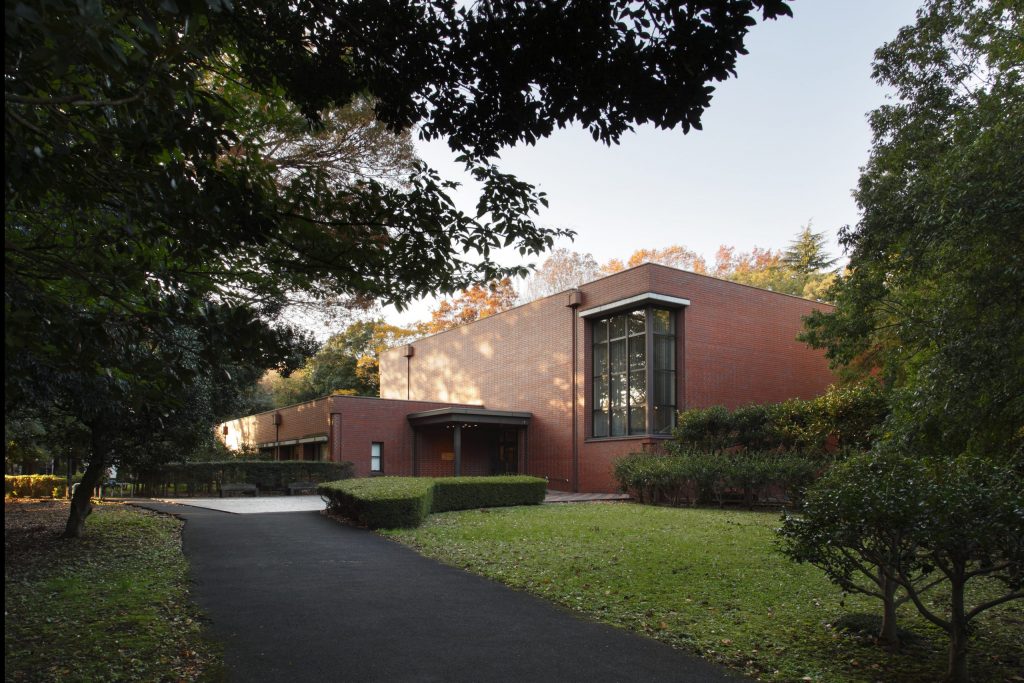
April 27, 2021
A University Museum’s Reaction to the COVID-19 Pandemic: Reflecting on the Past Year
2021.4.27
Akiko Fukuno
Acting Director, ICU Hachiro Yuasa Memorial Museum
International Christian University, Tokyo; Vice Chair of ICOM Japan
1. Introduction
University museums come in different sizes and hold a multitude of collections. As proven with the worldwide database compiled by UMAC (ICOM’s International Committee for University Museums and Collections), university museums vary from small exhibition rooms to large scale museums that have been in existence for centuries. This article is an account of how one small university museum in Japan first faced the COVID-19 pandemic. It will also show that museums regardless of size and location were able to connect and share information and experiences in the midst of the crisis.
Located in Mitaka, Tokyo, the International Christian University Hachiro Yuasa Memorial Museum (will henceforth be referred to as Yuasa Memorial Museum) opened in 1982 to commemorate the contribution made by the late Dr. Hachiro Yuasa in founding and nurturing the university as its first president. The museum is an independent two story building (building area 1000.14m²/ total floor area 1331.30m²) within the university campus and was constructed by Mayekawa Associates, Architects & Engineers (Image 1). The main collection of the museum was assembled by Dr. Hachiro Yuasa and consists of traditional Japanese ceramics, hand dyed and woven textiles, woodwork and other folk art items as well as archaeological materials from the Palaeolithic to Jōmon periods, and a restored stone floor (Image 2). In addition to our regular exhibition, we plan special exhibitions and open lectures three times a year which are free and open to the public. The museum is also used for courses of the university’s curatorial training program.
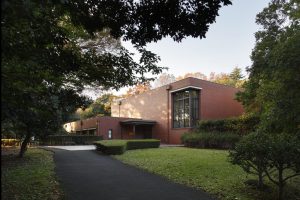
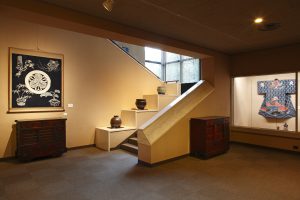
2. The Yuasa Memorial Museum During the COVID-19 Pandemic; Our Reaction as a University Museum
The first time the Yuasa Memorial Museum was impacted by COVID-19 was in February of 2020 when panic was rising, and news outlets aired daily coronavirus updates. The decision was made to cancel an open lecture only one day before the scheduled date. This was the very first decision and action taken within the university to stop the spread of the virus.
As for the university as a whole, the University Emergency Management Committee was established to discuss future activities such as entering the campus, class guidelines, student activities, closure of certain buildings. Then followed the decision to cancel the graduation and matriculation ceremonies, and finally to administer all of the classes online during the spring term. By the end of March, only the teaching faculty, residents, and those who were granted special permission were allowed inside the university premises. Faculty and staff were encouraged to work remotely from home, and tasks that were deemed not urgent were to be suspended. Regarding myself, due to the fact that I did not use public transportation to commute to the university, and there being no risk of infection with others within the museum, I worked alone for a majority of the time during the following months.
So how did the museum operate during this period? At the time, we were holding a special exhibition, “Exploring Hidden ICU Collections” which was scheduled until March 13, 2020. We determined that social distancing would not be an issue since visitors statistically decrease during February and March, and so we were able to fulfill the exhibition period. The next special exhibition was a collaborative show planned with the university researcher entitled, “Memories of Ritual Prayer on Miyako Island: The Photos of Uwai Sachiko and Higa Yasuo.” We continued to prepare for the opening that was scheduled for April 14 and had finished the installation, as well as mailing out flyers and posters (with a notice on the envelope that the schedule may change). But on April 7, the government issued a state of emergency and we were left with no choice but to postpone, and eventually cancel the exhibition.
How did we continue to function as a museum? It was clear that the end of the pandemic was nowhere in sight, so we (with a small number of staff who were able to work remotely) decided to search for things we could do remotely from home. Our first undertaking was to amplify digital contents of the museum. We were fortunate to have a team where each person contributed their expertise in areas such as editing, English translation, PR, creating websites, video editing, and illustration (Image 3a, 3b, and 4). As for myself, I became a hub for those working remotely and the museum, hosting two Zoom meetings everyday, which in turn became a place where the staff could communicate with one another. This routine made everyone familiar with online means.
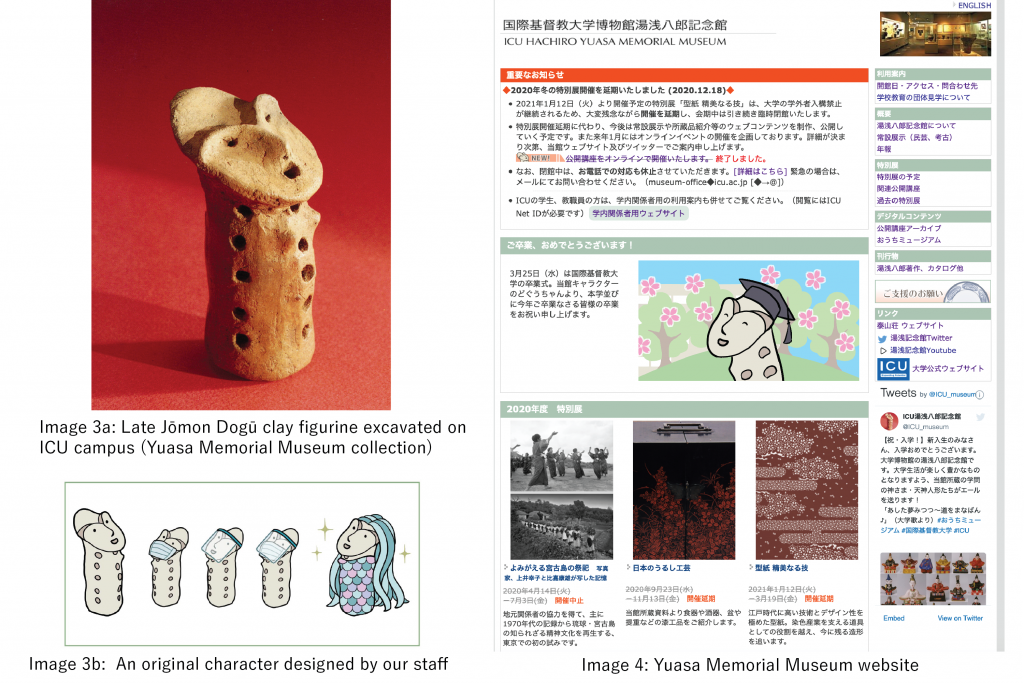
Our first project was to film and upload a video of the special exhibition that was cancelled in April. We purchased some instruments such as a gimbal and started filming on an iPhone by trial and error. We made videos of the co-organizer giving a tour of the exhibition and uploaded it in segments. Instead of an open lecture, we held a live webinar and later uploaded the recorded version online. Fortunately, a university is a collective assemblage of diverse specialists, so we were able to seek advice from the IT center and the Center for Teaching and Learning. Although we fumbled through the process, we were able to accumulate enough knowledge and succeeded in switching out all of the open lectures into online webinars (Image 5). Another experience that digitally strengthened us was being part of the “O-U-CHI Museum” (Museum at Home) project that was initiated by the Hokkaido Museum during the COVID-19 pandemic. Other digital projects that we undertook includes making slideshows of our past exhibitions, posting on Twitter, and improving the legibility of our website.
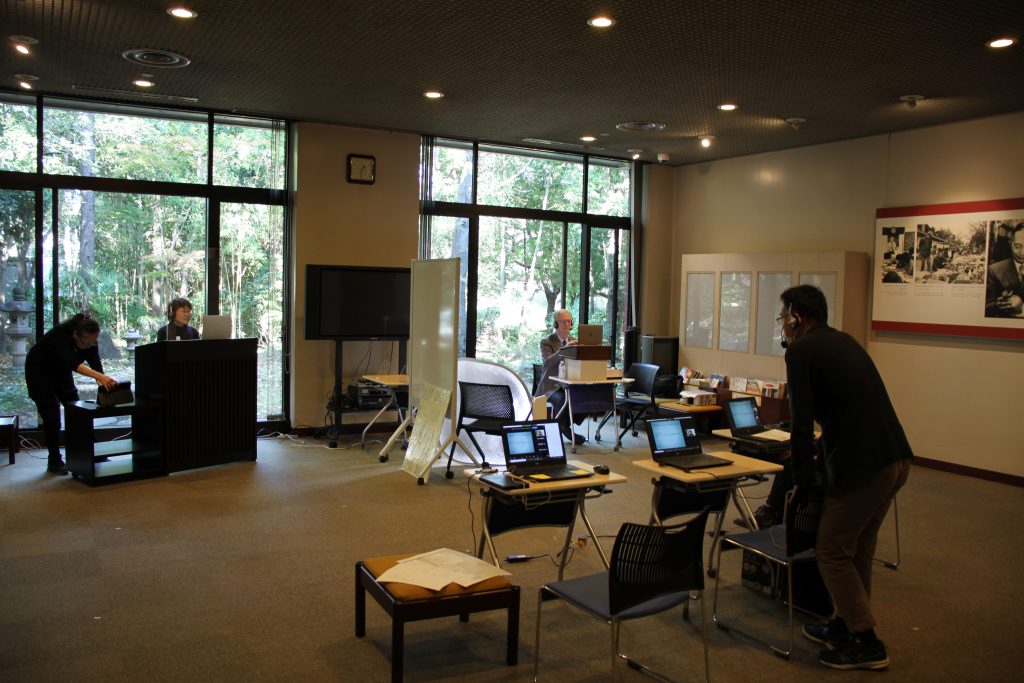
Last year’s fall and winter terms shifted from being exclusively online into a “hybrid” style (a mixture of online and in-person) and will continue in this way into 2021. The Yuasa Memorial Museum has also had to acclimate to the global crisis and reconstruct the entire schedule and course of action for the reopening of the museum.
The Yuasa Memorial Museum is open to everyone, on and off campus. The way we operate is similar to other museums, but the primary difference is that we are located on campus and classes are held inside the museum. Another difference is the role of our curators. They are part of the university’s general staff as well as being lecturers for courses of the curatorial training program. We, as a university museum, set out our first priority to be our students, faculty, and university sponsors. They will be the ones allowed to visit the museum by timed entry and reservation until the pandemic is suppressed. We must abide by the rules set by the university, and the public will not be allowed on campus until further notice (until stage 1 of the “Guidelines for Activities to Prevent the Spread of COVID-19” is lifted).
We have decided to focus on supporting the students who will be coming back on campus to use the facilities. We also launched an on-campus website in the process as well. “The Yuasa Memorial Museum Collection” (the first exhibition of a four-part series) is a special exhibition that is primarily composed of selected items from our own collection. We took precautions and minimized the number of displayed items so that visitors will not have to worry about physical distancing during their visit. We also increased the number of curatorial classes conducted inside the museum. By fall of 2020, the entrance hall was transformed into a “classroom” where courses such as “Museum Collection,” “Information and Communication Technologies in Museums,” “Museum Exhibition,” and “Museum Practice” were held in a hybrid and/or face-to-face style (in case of the face-to-face style, measures were taken to prevent the spread of the virus). This was made possible only because the campus was closed to the public and the staff were able to focus solely on class preparation. It was a test to our multitasking skills to juggle online and face-to-face activities concurrently, but by doing so we were able to utilize the museum and its collection to its fullest extent (Image 6, 7 and 8).
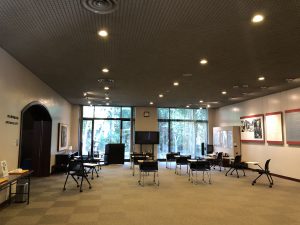
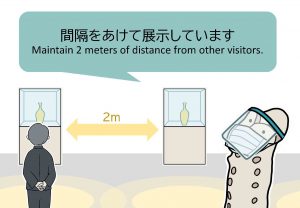
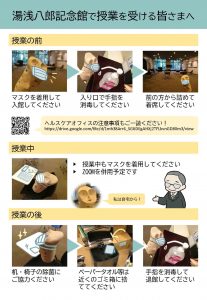
3. Domestic and international connections; and coexisting with COVID-19
In Japan, there are several alliances of university museums; the “Japanese Council of University Museums” is mostly for national university museums, the “University Museum Association of Kyoto and Kansai” and “Kansai University Museum Network” are for university museums in the Kansai region. There are of course, other instances of partnerships between university museums, for example Kokugakuin University and Seinan Gakuin University, also Nanzan University Museum of Anthropology and Meiji University Museum. But in reality, the overwhelming number of various genres and collections that exist in Japan make it difficult to make horizontal connections, especially for small museums. To resolve issues like this, Yurika Saito of Nature and Science Museum, Tokyo University of Agriculture who is also a member of UMAC, initiated a university museum ML (a mailing list for university museum professionals) so issues and information unique to university museums can be shared and discussed. Communication is paramount because it is what connects us during this period of uncertainty.
Communication between university museums from overseas has surely increased during the COVID-19 pandemic—a positive effect from an otherwise negative situation. Meetings for the international committee of ICOM are now exclusively online, and many efforts are being made to overcome this crisis. Here is an example from UMAC.
UMAC is an international platform for professionals who are working in the field of higher education museums and collections around the globe and is committed to contributing to professional development and consultation. UMAC fully upholds the ICOM Code of Ethics and the Magna Carta Universitatum. Besides the annual conference that was scheduled to take place in Australia was delayed to 2023, other activities resumed. Submissions were open for UMACJ (an open-source journal), and nominations and selection for the UMAC Award (of which I am the Chair) were all carried out. After much thought and ingenuity, the UMAC Award 2020 winner was announced and awarded in an online ceremony.
In reacting to the crisis, the UMAC Chair called out to international members across different countries, history, culture, and backgrounds to share issues that they were facing during the pandemic. UMAC organized a series of webinars called “UMAC POST LOCK DOWN WEBINAR SERIES” that took place twice a day every Friday to facilitate access for members from different time zones: Reopening for the Public (6/5), Reopening Collections (6/12), Lockdown Lessons: Going Digital (6/19), Lockdown Lessons: Online Teaching and Students (6/26), and Lockdown Lessons: The Near Future (7/3). These webinars can be viewed through the UMAC website. Additional information as well as guidelines from various countries are also available.
The connection and dialog between members that used to be sparse has deepened, and there is no distance that can divide us from the issues that we face as a collective. We are experiencing an unprecedented paradigm shift due to the COVID-19 pandemic, but as it is also the theme for the UMAC annual conference 2021, “New Opportunities & New Challenges in Times of COVID-19,” if we are able to learn from this experience, we are able to move forward. Endless problems are waiting to be solved, but the more we broaden our network and keep evolving the ways we share information domestically and internationally, the closer we may come to resolving them. We need to keep an open mind and be flexible as we continue to coexist with the predicament of COVID-19. As we prepare to reopen the museum, our thoughts are about how to improve accessibility and how we can best ensure the safety of the students, faculty, and the general public.